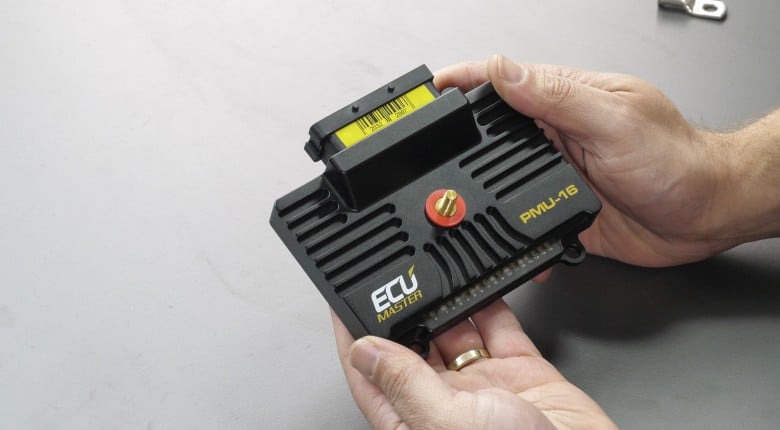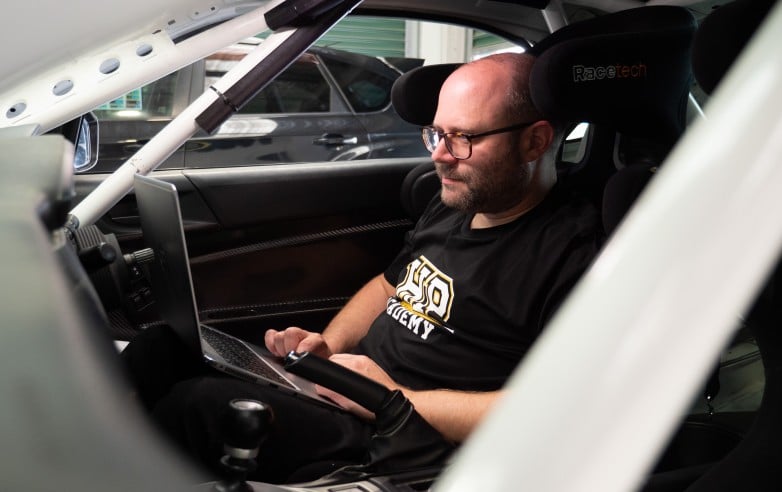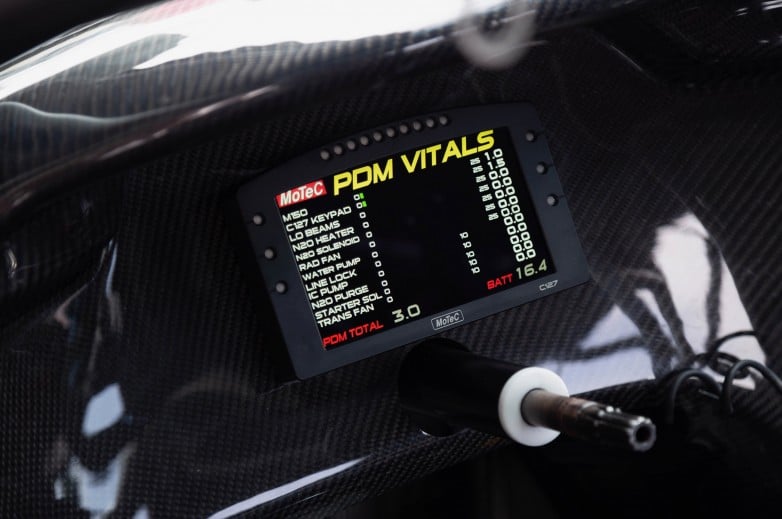Occasionally in this industry, a new technology comes along that changes the game. It’s happened in the past with more and more powerful aftermarket ECUs, improved turbochargers, and clever data analysis systems — and now it’s the PDM’s turn in the spotlight.
The PDM massively increases reliability and wiring simplicity, it reduces weight and heads off major problems before you even know they’re there — it can even reduce costs in the long run… But what exactly is it, and why do we need one? We sit down with High Performance Academy tutor, Zac Perston, to find out.
In this interview: What is a PDM? | Why Would I Want One? | PDM Usage Examples | Are PDM's Only For Race Cars | Does A PDM Require A Complete Rewire? | PDMs and CAN Bus | How To Pick A PDM | How Much Does A PDM Cost? | What Do I Need To Know To Take The PDM Course
Before we get into the nitty-gritty, how about you give us a crash course on exactly what a PDM – also known as a PMU or PDU – is, and how it came about.
Absolutely! First up, I’ll refer to them from here on out as a PDM… Not for any specific reason, just because it’s the term I’m most familiar with. PDM; Power Distribution Module, PMU; Power Management Unit, and PDU; Power Distribution Unit are all interchangeable terms though, and they do exactly what their name suggests; they distribute the power to all the electrical devices in our projects. Traditionally, this was done with banks of relays and fuses, and a whole heap of automotive wiring. A PDM replaces all these fuses and relays with a single discrete box, and all this power distribution is now taken care of by solid-state switching, as opposed to traditional mechanical switching relays.
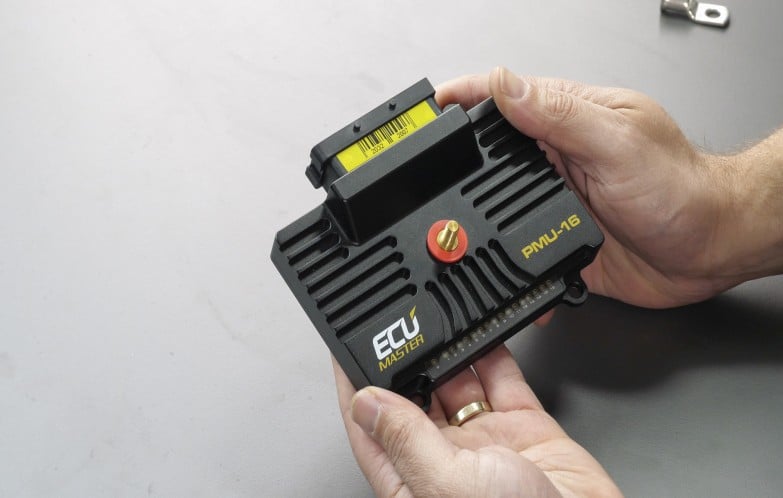
What does a PDM actually do for us and why would we want to use one?
Traditionally, for each group of devices that need to be switched on at a particular time in our electrical system, we’d need a specific relay to send these devices power. This relay also needs a switching signal, power, and ground. The connected devices will also have their own fuses, sized to protect the wiring going to them in the event of a problem with either the wiring or the device itself.
If you’ve got eight different devices (or groups of devices) that might need to be turned on and off at different times — think fuel pumps, cooling fans, water pumps, etcetera, then you need at least eight relays and fuses! Each relay is going to have at least four-wire connections to it, and each fuse a further two… This can really balloon out with a complex system, and anyone that’s built a wiring harness will agree that the power distribution side of things is the most complex part, and the hardest to achieve a tidy result with.
A PDM replaces all these relays and fuses with a single discrete box. They manage all this power switching with solid-state electronics instead of mechanical switching relays, and monitor the current being drawn by each of the attached devices in real-time, letting them step in if a fault is detected.
Could you give us an example or two of situations in which a PDM would save our arses, our cars, or at least our wallets?
The first example that comes to mind is one I’ve experienced first-hand. At an old job, we had a racecar with electric cooling fans, a pretty common thing. These were provided power from a PDM, with the current they were drawing being tracked. They were a pretty high-power fan, and I had their upper current limit set at 18 Amps.
During a testing session, the driver ran over some debris on the track, and this flicked up into the cooling fan, stalling it. If you stall a DC motor like this, its current draw dramatically increases. The PDM sees this and shuts the channel down, doing the job of a fuse.
The really cool thing with a PDM though, is that you can then program it to automatically retry powering that channel, and see what happens. When the PDM removed power from the fan, the DC motor wasn’t providing any torque, and this let the piece of debris — a chunk of rubber in this instance — fall away. When it retried the channel, the fan could spin back up and there was no ill effect.
This would have all been the same with a conventional fuse setup, except that the fuse would have required a trip back to the pits to replace. Not a big deal during a testing session, but during an actual race that could be a disaster! It also let us know that maybe some redesign of the cooling package shrouding was in order.
A great example of a PDM saving our wallets is the flexibility it gives us in the system as a whole. With a hard-wired fuses and relays setup, the decision around which switch or signal turns on which relay is baked into the physical construction, and can be very expensive, or even impossible to change after the fact. With a PDM, this is all defined in software, so we can load up our config tool and make those changes really easily. No money spent on more materials, and a big saving in time, both great things.
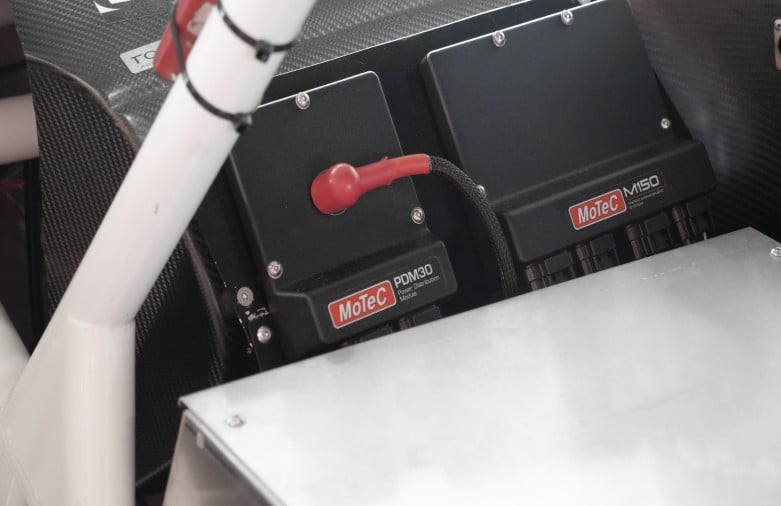
Does a PDM have any use in a road car project, or is this purely race car material?
They’re totally applicable in a road car. To be honest, I’ve pretty much 100% switched to using them instead of more conventional relay and fuse setups. Most of the PDMs on the market include other control functions like flashers and timers that let us wire up our indicators or intermittent wipers to them. This replaces yet more components and brings all that control into the one box.
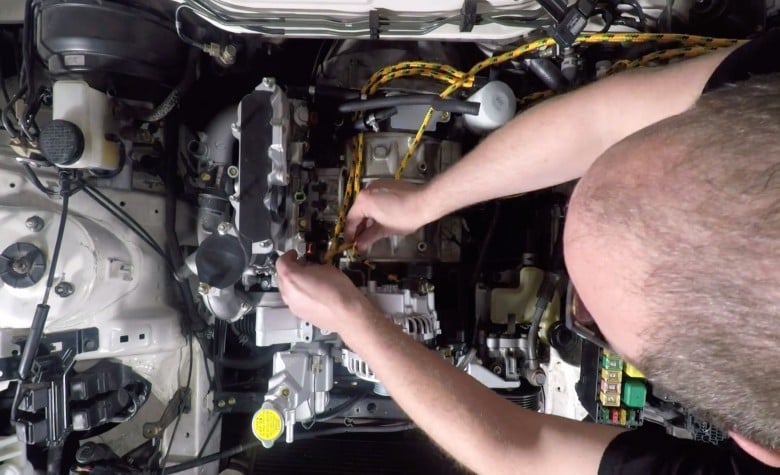
Is the PDM something that requires a complete rewire of a car, or more something that we can wire into the existing factory equipment?
It depends on the application really. If you’re building a bespoke dedicated racecar, then yeah, I’m probably going to recommend a complete rewire, as you’ll be removing many of the original electronic items fitted to the car anyway.
For a more street-orientated application, maybe a resto-mod type project, then no, you can install a PDM to just power the items you’re updating on the car. Putting EFI on an older carbureted car is a good example of this, as the PDM can provide power to things like the new fuel pump, cooling fans, ECU, injectors, etc. While the rest of the vehicle is left with its standard systems, provided they’re in good working order.
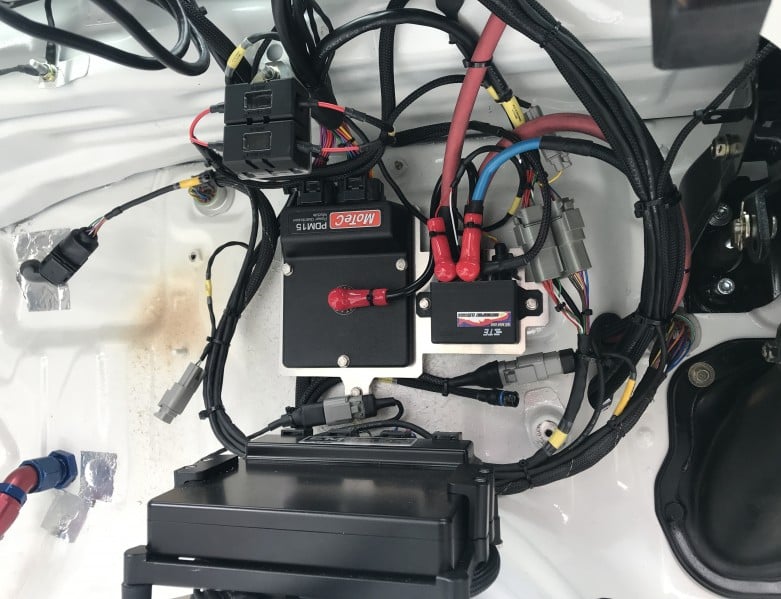
Does a PDM require a modern CAN Bus system to work?
It’s not a requirement, but it can certainly make things easier! As we talk about in our CANBus course, CAN is great for reducing the wiring bulk in a vehicle, as now we can get a whole lot of signals and data sent around the vehicle with just a couple of wires.
If we have a switchboard in the vehicle to control the startup procedure, fuel pump-out, air jack deployment, etcetera, this can require many, many wires for a conventional relay and fuses system. With a PDM talking to a CANBus-enabled keypad, it’s just two wires no matter how many buttons that keypad has. That being said, a PDM will also have general-purpose digital inputs that can be wired directly to switches and buttons. Usually, an installation will have a combination of both.
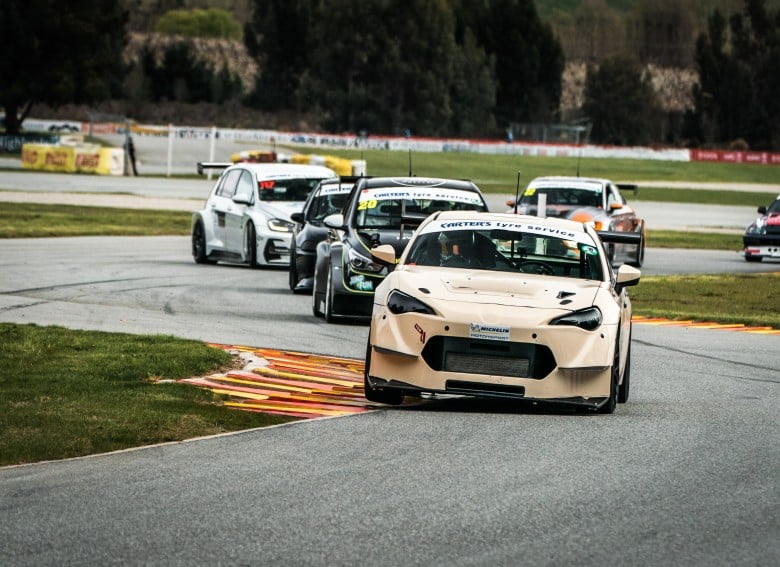
There seem to be quite a few options out there on the market – how do we know what we should be shopping for?
We cover this pretty well in the course, as you’re totally right, it can be a little daunting when you’re first looking! Once you’re familiar with what a PDM is, and what it does though, comparing all the available options and making the right choice becomes much easier.
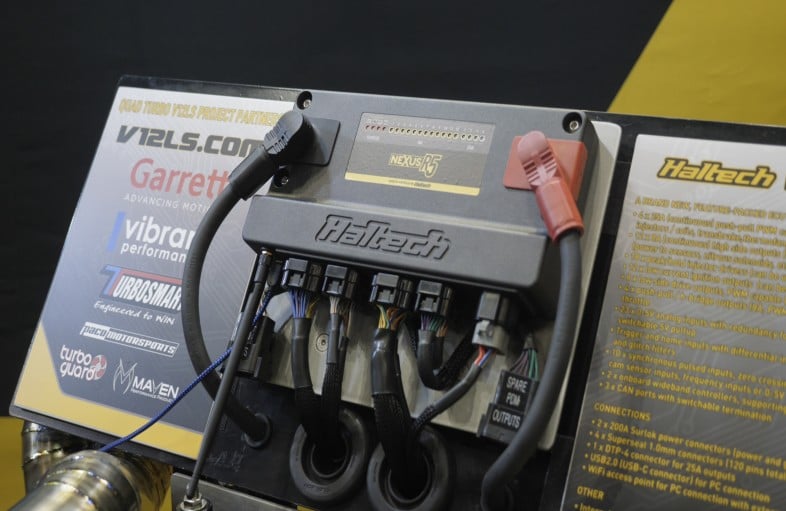
What kind of costs should we be expecting to install a PDM once it’s all said and done?
So I’ve extolled the virtues of PDMs quite a bit here, but we do need to talk about the downside, and that is, as you’ve hit upon, the cost. They are going to be more expensive to purchase than the relays and fuses they replace. That being said, they are typically far simpler to wire, with less connections required. This reduces the cost of the wiring harness, and increases the reliability of the system as a whole. Building a tidy switch panel with relays and fuses is also no simple task, and with so many individual power supply wires required, they can be a bit of a nightmare to wire.
The price on PDMs is coming down all the time, and the different brands have different prices, but I’d budget at least $1500USD in your project for a 16 channel unit.
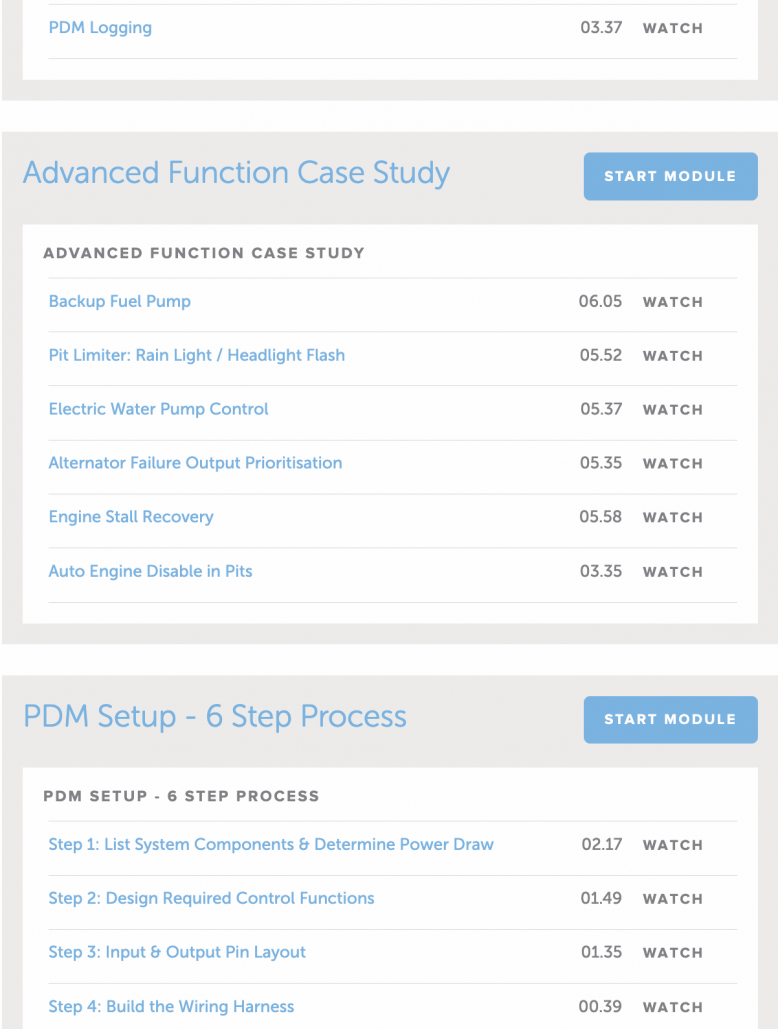
Our HPA ‘PDM Installation and Configuration’ course is pretty all-encompassing and gives the user all the knowledge they need to be able to do this themselves – but what level of ability do you think they’d need before starting? Could someone come into this course fresh, or do you recommend getting some basic knowledge down first?
I’d definitely advise anyone going down the route of specifying and installing a PDM to have a decent understanding of basic automotive electronics. Although we go into a good level of detail about electrical loads and what you need to be aware of around them in the PDM course, some background knowledge is assumed. For anyone completely new to the field, I’d recommend going through our wiring fundamentals course first, as it’ll absolutely get you up to speed!
Zac has created courses for you on motorsport wiring, CAN Bus communication and PDM installation and configuration to cover a wide range of your performance electronic knowledge needs. Enroll now and start learning instantly.
